|
Taming the lightning
(a New Zealand perspective) Milestones a New Zealand timeline of communications and computing (A living document compiled by Keith Newman wordman@wordworx.co.nz . Contributions and corrections welcome). Last update Jan 2004. |

|
“On the threshold of the twenty first century we are entering a
period of change as far reaching as any we have seen. Since the
industrial revolution people have had to locate themselves in
large centres where they could work with others, but now new
technologies are rendering distance unimportant. The skills that
are needed in tomorrow's society will be those associated with
information and knowledge rather than the industrial skills of
the nineteenth and twentieth centuries. Changing technology will
affect almost every aspect of our lives: how we do our jobs; how
we educate our children; how we communicate with each other and
how we are entertained,” |
1840: S. E Grimshaw became the first Postmaster of New Zealand. His payment for service was 20 percent of postal receipts.
1858: The Local Posts Act opened the way for the appointment of a Postmaster General and authorised Provincial Councils to establish post office services which were to be co-ordinated on a national basis. Ultimately the New Zealand Post Office would take control of banking through the Post Office Savings Bank along with telegraph and telex services, the telephone network for national and international calls and radio services including contact with ships
1862: First electric telegraph line linking Christchurch and Lyttleton is the catalyst for a series of constructions involving private and military telegraph lines between Auckland, Christchurch and Dunedin. Kiwis can now keep in touch using Morse code. One of the first messages sent was to Mr Oakes in Christchurch and read: "Mr Oakes coming round in schooner Colleen Baun with goods. Dog Pedro poisoned and is dead.” A second network was quickly established between Port Chalmers and Dunedin.
1863: The Postmaster-General devoted a page of his annual report to the telegraph saying he wanted to see a colony-wide telegraphic network including a Cook Strait cable. There were nine independent telegraph networks covering much of the South Island. The Government established the Electric Telegraph Department, immediately placing the growing number of independent telegraph networks under centralised control.
1865: A second attempt at laying a cable across the rugged seabed of Cook Strait in August proves successful, and communications between the Islands is possible from the 26th of that month. A telegraph office is established in Picton; the following year Blenheim and Nelson followed suit.
1872: The Wellington-Auckland line is completed, around 400,000 messages a year are being carried over the fledgling network
1876: The first undersea cable from Botany Bay in Sydney, to Cable Bay near Nelson came ashore in February 1876. Once connected to the terminal house at Nelson on 21 February, direct communication with Australia was possible and on to Asia, Europe and Britain. The New Zealand Telegraph Department employs and trains the first telecommunications operators who use Morse keys to send and decode messages.
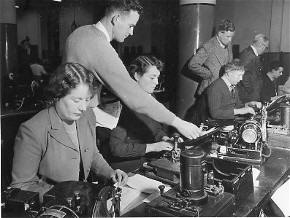 1877-1880: In 1877 a Dunedin electrician Charles A. Henry
organised the first 'talking telegraph' trial based after putting
together a telephone receiver and transmitter based on what he had read
in a magazine. According to the Otago Daily Times a ‘telephone
instrument and wire’ was attached to the existing telegraph wire at the
Dunedin Telegraph office and another at the Milton office - a distance
of 57km. The newspaper described it as ‘simply marvelous’. It wrote ‘A
large number of questions were asked and each was replied to
instantaneously by the person in Milton….Not only could the words spoken
at either end be clearly heard, but the difference in tone of voice was
easily distinguished’. The first telephone office was opened at
Port Chalmers in 1879 with the first link between Port Chalmers and
Portobello so shipping information could be relayed to Dunedin more
quickly. A Mrs Sheehy, who took a call from a Roxburgh farm in 1877, was
the first person in New Zealand to hold a conversation on a private
line. Telephones begin to be used to supplement the telegraph in
small towns which lacked the finance to employ Morse operators.
1877-1880: In 1877 a Dunedin electrician Charles A. Henry
organised the first 'talking telegraph' trial based after putting
together a telephone receiver and transmitter based on what he had read
in a magazine. According to the Otago Daily Times a ‘telephone
instrument and wire’ was attached to the existing telegraph wire at the
Dunedin Telegraph office and another at the Milton office - a distance
of 57km. The newspaper described it as ‘simply marvelous’. It wrote ‘A
large number of questions were asked and each was replied to
instantaneously by the person in Milton….Not only could the words spoken
at either end be clearly heard, but the difference in tone of voice was
easily distinguished’. The first telephone office was opened at
Port Chalmers in 1879 with the first link between Port Chalmers and
Portobello so shipping information could be relayed to Dunedin more
quickly. A Mrs Sheehy, who took a call from a Roxburgh farm in 1877, was
the first person in New Zealand to hold a conversation on a private
line. Telephones begin to be used to supplement the telegraph in
small towns which lacked the finance to employ Morse operators.
1879: Only 19 of the 214 telegraph stations were still operating independently, as the Post Office progressively took over the various telegraph networks from the Electric Telegraph Department.
1881: The New Zealand Post and Telegraph Department replaced the Telegraph Department and quickly became a state monopoly, on the advice of a government official, in order to prevent the Electric Telegraph Company of Chicago, a direct antecedent of Ameritech and Bell Atlantic, opening an exchange here. It would take full responsibility for this new fangled telephone device, training operators and developing a phone network across the country. The first manual exchange with battery operated transmitters was opened in Christchurch allowing 30 subscribers to speak to the operator and each other. Within 10 days Auckland opened its exchange with 26 subscribers. Many other major cities follow suit. Overhead cables began appearing across the nation connecting businesses and communities. These poles with wires hanging from them were often referred to as ‘Lemon trees’ after the director of telegraphy Dr Lemon.
1892:
Female exchange operators were employed to sit in rows connecting calls
by inserting a plug into the socket relating to the number called.
1894: A year before Marconi's first successful wireless
transmission in Europe, Ernest Rutherford a physics graduate at
Canterbury University College, transmitted a signal 18 metres across the
physics department through several walls using Hertzian waves.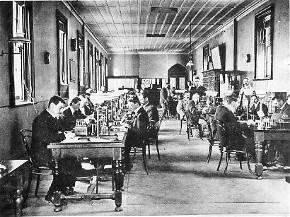
Early
1900s: Technology advances
rapidly as does the network with telecommunications becoming an
important part of the social fabric and one of the first forms of
commercial employment. The phone links the local community with family
and important services and begins to touch the lives of all New
Zealanders. Things changed further with the arrival of the automatic
exchange and increased capacity able to handle 500 lines at a time.
1902: J.L. Passmore, a Dunedin teenager, built a wireless
telegraph from instructions in a magazine. By 1903 the 18-year-old
could send a signal up to 10km, by which time any further
experimentation may well have incurred the wrath of the government which
was now had full control over any developments that might be termed
wireless telephony
1903: New Zealand lawmakers recognise the potential of sending
wireless messages over radio with the Wireless Telegraphy Act
which was passed on September 26, 1903 a world first, and a year ahead
of the equivalent legislation in the UK and two years ahead of Australia
and Canada. The Act protected the government's investment in the new 'wireline'
telephone and telegraph networks and allowed it to manage
radio spectrum to prevent interference.
1906: The first domestic radio transmission was made by
the Marconi Company at the 1906 Christchurch International
Exhibition and the first trans-Tasman transmission was made from HMS
Pioneer in Wellington harbour via HMS Powerful in the Tasman
Sea to HMS Psyche in Sydney Harbour on 3 February 1908.
1910:
New Zealanders now had their first coin operated telephones.
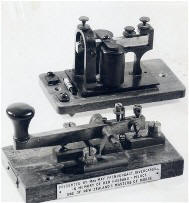 1912: The New Zealand government passed a new Country
Telecommunications Act, which enabled people in rural areas to build
their own telephone networks and link into the public network. The first
automatic exchange equipment came into operation in Auckland and
Wellington that year, as a supplement to the manual exchange in each
centre. The first town to have an all-automatic telephone system was
Masterton in 1919
1912: The New Zealand government passed a new Country
Telecommunications Act, which enabled people in rural areas to build
their own telephone networks and link into the public network. The first
automatic exchange equipment came into operation in Auckland and
Wellington that year, as a supplement to the manual exchange in each
centre. The first town to have an all-automatic telephone system was
Masterton in 1919
1915: The first telephones were wall mounted by in 1915 the
candlestick telephone was introduced.
1921: New Zealand's first broadcast concert was transmitted from
the physics laboratories of Otago University on 17 November 1921 by
Professor Robert Jack. He transmitted the first of a series of concerts
that included live music and gramophone recordings. His transmissions
were heard as far afield as Auckland.
1923:
The first regulations governing broadcasting were imposed. Anyone
planning to become a broadcaster needed to be of good character, include
religious material at least three hours on Sundays and restrict content
to “an educative or entertainment character such as news, lectures,
useful information, religious services, musical or elocutionary
entertainment and items of general interest that might be approved by
the Minister from time to time”. Advertising was unthinkable and
controversy was banned.
1925: The first private automatic branch exchanges (PABX)
appeared. The first radio broadcast was made from Auckland (check).
1926:
While there had been a relatively, The first Cook Strait cable dedicated
to telephony was laid replacing the unreliable telegraph cable linking
the North and South Islands which had been constructed in 1864.
1927: A transatlantic telephone service was in operation
1929: Carrier systems were introduced to transmit a number of voices over a single pair of telephone wires by using different frequencies (frequency division multiplexing).
1930: All the main centres were now part of the national telephone network through private automatic branch exchanges, and callers could pay a toll to call to connect between cities and towns. The New Zealand Post Office (NZPO) had around 125,000 subscribers. The square black bakelite remained the standard phone.
Overseas calls became possible from the 1930s. The first international call was made from Kirkcaldies and Stains in Wellington on November 25th, 1930 and marked with a call from the Minister of Native Affairs Sir Apirana Ngata and the Acting Prime Minister of Australia Mr Fenton. Mr Ngata opened with a Maori greeting. Shortly after two business calls were sent to Sydney and six people from Australia rang friends in New Zealand. The charge for the calls was one pound per minute..
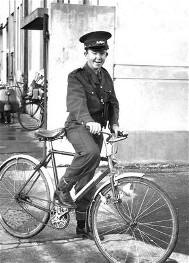 1931:
The international tolls service was extended to Britain
with calls costing six pounds and 15 shillings. In the first year there
were 312 calls to and from New Zealand.
1931:
The international tolls service was extended to Britain
with calls costing six pounds and 15 shillings. In the first year there
were 312 calls to and from New Zealand.
1939:
New Zealand has more phones per head of population than any
country except the US. International toll rates have become more
affordable and 3457 calls to and from New Zealand were recorded.
1945: At the Commonwealth Telecommunications Conference held in
London, the New Zealand Government signed an agreement to take over
responsibility for external communications. The assets of Cable and
Wireless were purchased and the New Zealand Post Office became
responsible for external as well as internal telecommunications
services.
1950: There were 348,539 subscribers to the telephone service.
1953: The first subscriber toll dialing (STD) was introduced
allowing people to make direct toll calls.
1959:
A telecommunications ‘motorway’ was established by the Post Office for
long distance calls, initially carrying just 600 circuits between
Wellington and Auckland. This formed the base for the modern day
networks.
1960:
At
7.30pm on Wednesday 1 June 1960, a switch was flicked in a building in
Shortland Street in central Auckland and New Zealand's
first official
television transmission
began. New Zealand was a latecomer to the television age. England had
led the way when the BBC started the world's first public service in
1936; three years later NBC began broadcasting in the United States and
Australia had its first stations operating by 1956. A Government
committee had been studying the new medium since 1949, and
experimental
broadcasts
had been allowed from 1951 (as long as they included nothing that could
be classed as 'entertainment'). The green light for television was
finally granted in November 1959 with an announcement from the then
Prime Minister of New Zealand, Sir Walter Nash. By 1960 New Zealand has
686,021
telephones
and the more aesthetically shaped models begin to replace the harsh
black bakelite models. In November, the Treasury leases an IBM 650
mainframe,
New Zealand's first computer.
Within a year Canterbury University and the Griffins biscuit factory
also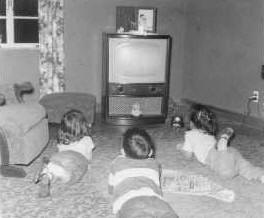 have computers. By 1962, Treasury considers its IBM 650 outmoded.
have computers. By 1962, Treasury considers its IBM 650 outmoded.
1962:
Government owned under the New Zealand Broadcasting Corporation (NZBC)
established running national radio service, Radio New Zealand.
1963: The last
Morse telegram was written by Governor-General Bernard Fergusson to the
mayor of Eastborne in January 1963, in October the last domestic
Morse circuits closed down.
1965:
New Zealand was now
third in the world in telephone density with 35 percent of the
population subscribing. Around 77 percent of all phones were on
automatic exchanges.
1969: First Network News bulletin was read by Dougal Stevenson and received simultaneously around the country.
|
“The new electronic interdependence recreates the world in the image of a global village,” Marshall McLuhan, the Gutenberg Galaxy, 1962 |
The 1970s: New Zealand is rapidly evolving from rural to industrial and commercial and the phone network has under pressure to keep pace. The nation moves beyond a single TV channel, the universities begin to network their computers and communications networks go international. The so-called ‘broadband’ network is now carrying thousands of circuits and STD (subscriber trunk or toll dialling) is available in most centres by 1976. International subscriber calling, without having to go through the operator, was also introduced as were push button and speaker phones.
1970: the New Zealand Post Office had begun offering its Datel (data/telephony) service sending computer and telex data over dedicated lines at 2400bits per second.
1971: The first satellite station is opened at Warkworth. There are now more than a million phone subscribers. The first overseas on-line link was created by American Express to connect into its hotel booking network. The government, through the Vice Chancellor’s Grant’s Committee made an arrangement to purchase five brand new Burroughs 6700 (later Unisys) mainframes for the country’s university’s with a view to having them networked.
1972:
There were 200 business
computers
in the country, mainly unwieldy mainframes that needed huge air
conditioned rooms to operate. They were fed punch cards and spat out
their data on huge plan printers in plain asci type characters.
1973:
Plans were first discussed to connect the Burroughs B6700
mainframe at Victoria University to Aloha University in Hawaii using the
Post Office’s X.25
packet network.
University administrators didn’t believe the research project was
worthwhile so it lapsed.
1975: New Zealand now has two TV channels with the arrival of, wait for it...Network Two. The NZBC dissolved and was replaced by Television One, Television Two and Radio New Zealand. The first real attempt at linking university computers occurs when Victoria University and Massey University began experimenting with their Burroughs machines, using a pair of synchronous modems operating at 4800bit/sec. The plan to share resources on-line was optimistically dubbed Kiwinet but the link was down more than it was up.
1976:
Telephone users were given increasing autonomy with the
shift from the old party line, operator-based system, to STD
(subscriber trunk or toll dialing) which was available in most
centres by 1976. International subscriber calling, without having to go
through the operator, was also introduced as were push button and
speaker phones. A
substantial upgrade of the national telecommunications network took
place in March. The Tasman 1
cable between Auckland and Sydney came into service in a joint
venture between the New Zealand Post Office and Australia’s OTC (Overseas
Telecommunications Commission).
The foundations for the DSIR network were established from about
April 1976 when the DSIR’s Physics and Engineering Laboratory (PEL)
created the Computer Research Section (CRS) at Gracefield campus in
Lower Hutt. They also built its first its first wide area network based
around the Digital Equipment Corporation (DEC) PDP-11 minicomputers and
communications controllers. In October some of the technology, and a lot
of the lessons learned from Kiwinet, provided a foundation for
what was to become VicNet, a general
purpose network that would be able to link the machines on the Victoria
University campus to Massey University’s B6700 using the Post Office X.25 packet
switching network. While it achieved modest success on the
Victoria campus, Massey University missed out on funding for the leased
line and never successfully linked. In March the
Computer Science Department at Waikato, frustrated at not being provided
with appropriate computing resources in the government’s big spend up
conspired with a group of lawyers to buy a brand new DEC PDP-1170 at a
cost of $548,000 which was then promptly sold to a merchant bank and
then signed back to the university on a lease to buy deal. The Ministry
of Education, was furious but Computer Science at Waikato University
rapidly became the most sought after subject.
1977: DSIRnet, the network of the government’s DSIR research arm is established using protocols modified from its Australian equivalent CSIRONET
1979: From December 1979 a link through the Intelsat IV satellite, in conjunction with new NEC 820 cross bar equipment in Auckland, enabled international subscriber trunk (ISD) dialling from New Zealand. Intelsat circuits leased to the International Maritime Satellite Organisation (Inmarsat), which New Zealand had joined in July 1979, meant local users could gain instant access to Tymnet and Telenet, two North American data networks which were part of Oasis (Overseas Access Service for Information Services). The service proved popular with New Zealand libraries, as they could access the Dialog database with its then 18 million bibliographic entries.
The 1980s: A lack of investment by the Post Office meant the network was not in a position to handle the growth needed for the next generation of services. By the mid-1980s the network was overloaded, there was massive congestion. In Auckland the exchange was verging on collapse and across the country there are frequent network crashes. The Post Office, a government department limited in what it could invest, became increasingly inefficient. The government began to look at the problem and ways to create a more efficient department and as part of its economic reforms began looking at ways of putting it on a commercial footing. Under the State-owned Enterprises Act of 1986 it created several state trading companies including Telecom.
1980: The Broadcasting Corporation of New Zealand (BCNZ) formed to merge TV1 & TV2 channels under a single corporation. The Post Office supports about 800 leased lines and 1800 modems. When DARPA needed a team to implement its brand-new TCP/IP protocol stack on the VAX under Unix, it chose Berkeley Unix as the platform largely because its source code was available and unencumbered. This was a major turning point in the evolution of Unix and the various tools that improved connectivity, thereby assuring the success of the nationwide and global goals of APRAnet, and TCP/IP as a communications protocol for the future.
1981: New Zealand’s first and only indigenous home computer systems were created. The Poly. Development of the Poly named after Wellington Polytech where it was developed was targeted at school use with a colour screen and ‘obscure proprietary networking system. The Aamber Pegasus, supported multiple computer languages and had a network version which connected to a server. Both attempted to meet the requirements of the government’s computers in schools initiative which never produced orders large enough for the machines to become a commercial reality.
1983: United Nations World Communications Year, celebrating the imminent convergence of computers and communications technology. The New Zealand Post Office began trialing a satellite-based X.25 packet switching data transmission service (Pacnet) and installed the first fibre optic cable in a 14km pilot system between Wellington and Lower Hutt carrying several hundred telephone circuits.
1984:
The bureaufax service with its attendant beepers
arrives, allowing busy individuals to know when they are being paged.
Victoria University established a campus network based on IBM's computer
protocols.
The DSIR’s Applied Maths Division accesses the Australian CSIRO’s Cyber
205 supercomputer, for finite element modeling of the Maui gas field.
Access is initially through a Post Office direct link then through its
Pacnet, packet switching service. Cabinet had approved Pacnet in
September 1979 specifically for business customers with dispersed
terminals or teleprinters linked to a central computer, operating at
2400bits to 48kbit/sec. It became commercially available from August
1984 considerably expanding the use of the Post Office digital data
network (DDN). Electronic Funds Transfer
at Point-Of-Sale (eftpos) appeared on the retail scene, only five
years after the country’s first Bank ATM was installed.
Digital switching and transmission took a giant leap forward in
November 1984 when the first Wellington-Auckland link using digital
microwave and co-axial cable technology went live after two years
planning. The $24 million system had delivered a 640km digital link that
could transmit voice and data at 140Mbit/sec per circuit. At the same
time new computerised stored program
controlled (SPC) exchanges were cut into the network. A major SPC
upgrade was installed in the Auckland area from 1984 after a massive 20
percent upsurge in toll traffic caused by an election year boom and
rising business confidence. Regardless subscribers continued to face
delays and overloading.
1985: New Zealand
was divided into 22 districts for postal services, each under
control of a chief postmaster and 17 telecommunications districts, each
under the control of a district or regional engineer. Computers at
Auckland University Computing Centre and the Victoria University campus
were connected by leased line using the 4800bit/sec modems bought
for the 1975 Kiwinet project. Fibre optic cable of much higher capacity
than that trialled in 1983 was in widespread use, carrying thousands of
phone circuits over 50km without repeaters, between main cities and many
towns.
Canterbury University Computer Services Centre established a
connection from its Prime 750 computer to the Post Office Pacnet X.25
network at 10kbit/sec and set up a crude email system to log in to other
university computers. Robert Biddle, a PhD student with help from
programmers Ken Lalonde and Alan Bowler, used the connection to log-in
to the Mathematics Department at the University of Waterloo in Canada
and beyond. The first meeting to establish a common backbone network
between universities and research departments were held in August at
the annual Telecommunications Users Association Conference (TUANZ)
with representatives of the New Zealand universities, DSIR and MAF
attending. Government departments were invited but no-one turned up. A
second meeting in November 1985 was called to coordinate the development
of a national research network. The only agreement reached was on a
common protocol, the Coloured Book Suite. In late-1985, John Houlker at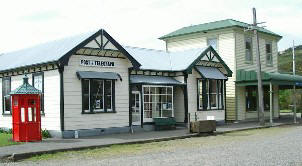 Waikato University had discussions about connecting to the Internet
backbone with CSnet founder Larry Landweber at the University of
Wisconsin, a key node on the NSFnet backbone.
Waikato University had discussions about connecting to the Internet
backbone with CSnet founder Larry Landweber at the University of
Wisconsin, a key node on the NSFnet backbone.
1986: An agreement was now in place for Waikato University to connect into CSnet backbone and take responsibility for the dot.nz country code. Although it was a weird way to connect, with Waikato still caught up in a mix of protocols, at least a strong connection had been made directly through to the US Internet backbone. The fax was now a major communications tool, with 800 fax machines operating compared to 200 in 1984. The Post Office began commercial operation of its Starnet electronic mail service enabling messages to be left for business subscribers, government departments or universities in ‘electronic mailboxes’ on computers. Users would log in to the remote database to download or send messages via the Pacnet network. Canterbury University’s Computer Science Department spent its furniture budget on a DEC VAX 750, installed Berkeley Unix (BSD4.2) and named the system ‘Cantuar’. Canterbury ended up with UUCP connections to the University of Waterloo in Canada, Victoria University in Wellington, Melbourne University and the Mathematical Centre in Amsterdam. Victoria University of Wellington (VUW) was not only a UUCP site, it was also a node on the Australian SUN-III network, a Sydney University initiative with its own homegrown protocols and an X.25 link. VUW used this connection to get news, and in turn Canterbury got its UUCP news from VUW’s Computer Science Department. By February 1986 Victoria began providing links to the DSIR and Ministry of Agriculture and Fisheries (MAF) networks. By mid-year Waikato, Massey and Canterbury Universities had joined in using the US links for mail and access to newsgroups.
Richard Naylor, the IT manager at Wellington City Council, began clustering disparate IBM and DEC mainframes within the council to create CityNet, and facilitate the use of email across departments. This was initially done through Telecom’s Pacnet before it was discovered that connecting to a certain address would get the whole council on the Internet. After establishing an email gateway with Victoria University, Naylor began looking at ways to better use the fibre optic links between council buildings and speed up communication, ultimately creating an inter-network with Victoria.
1987: In February the New Zealand Vice-Chancellor’s Standing Committee on Computing decided to follow international precedents and have three second level domains within New Zealand. The dot.ac domain or academic domain would cover universities, polytechnics and schools. The dot.govt domain would cover all government departments and a third domain dot.co.nz would cover all commercial organisations. Under the State-owned Enterprises Act of 1986 the New Zealand Post Office was split into state trading companies including NZ Post, Postbank and Telecom Corporation. On 31 March 1987, the newly created Telecom became an SOE.
|
“Historically the New Zealand computer industry has probably been one of the biggest creators of new jobs, and the relationship between telecommunications and computers goes hand in hand. The Government could make a fortune out of Telecom by refusing to let anyone else do any telephone work and massively overcharging for internal toll calls, which is what the old Post Office used to do. This certainly punished, and effectively distorted the New Zealand computer industry,” State-owned Enterprise minister Richard Prebble, Network World February-March 1990 |
The Government-owned
Telecom Corporation purchased the assets of the old Post Office for
$3.2 billion and began work on improving the services and network as the
telecommunications market progressively deregulated. While Telecom had
launched an Advanced Technology Group headed by Dr Murray Milner,
who was himself using the Internet at 2.4kbit/sec from his base in
Silicon Valley where he was studying, Telecom’s focus remained on X.25.
It would be another decade before it was seen to take the Internet
seriously.
Telecom launched its 025
mobile network and CDPD mobile data network and by the end of 1987 had
2000 customers. It cost $2.84 for a 3 minute fixed line toll call
between Auckland and Wellington and $4.20 for a 3 minute off-peak call
to Australia. There were 38,000 remaining party line phone customers.
All main DSIR sites were now part of the DSIRnet and all
universities were connected into SpearNet
(South Pacific Educational and Research
Network), which used the Janet protocols for mail, file transfer
and transport layer with lower layers provided by Telecom’s Pacnet X.25
network. Victoria University had managed a connection to North America
(University of Calgary) and to Melbourne University using Unix (UUCP)
protocols and connected to DSIR Applied Maths, Fisheries Research and
ICL Computers mainly for USENET and email. Victoria operated a mail
gateway between the networks but the different protocols require
technical wizardry to negotiate. Sorting through this dilemma ultimately
inspired the creation of second level domains service (2lds) in the .nz
namespace.
While Waikato University was connected to the Internet backbone
via CSnet and technically operating the dot.nz country code, it had been
convinced by Telecom the way forward was X.25, and was still trying to
cobble together an efficient solution to share its ‘store and forward’
access with other universities. John Houlker from Waikato University and
Professor John Hine from Victoria University’s Computer Science
Department, went to the US looking for a better deal. They began
negotiating with Tony Villasenor, head of NASA’s scientific Internet,
and Jim Hart a high performance computing specialist from NASA’s Ames
research centre, who wanted to get the Internet into the
Asia-Pacific region to connect a variety of science projects. They would
pay for half the connection to New Zealand but there were details to
work out, costs to cover and Australia wasn’t happy at the prospect.
Closed ISDN trials were
planned from 1987 and it was expected that by 1990 a narrowband
digital network would be commercially available, enabling users to
operate telephone, videotext, packet switching, facsimile and various
data networks as one integrated service. In 1990 the hype continued but
very little had happened.
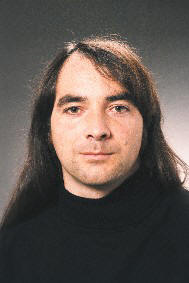 1988:
Telecom installs large capacity fibre optic cables
with up to 72 fibres around the central business districts of
the largest cities. It also delivers international capacity
to the Waikato University where the first Internet Exchange (NZIX)
is created around an Ethernet switch using
IGP routing
protocols. Victoria University
decides to use routers rather than bridges on the new Ethernet
LAN that will link the new Computer Science building to the
existing Computer Center, purchasing them from an unknown
company called Cisco, rather than the better known
Wellfleet or Proteon. VUW suggests that ECL (a division of the
TV repair people Tisco) become the country agents for Cisco (ECL
became Case, then Dowty, and later Logical, purchased by
IBM). Five Cisco MGS
routers were ordered, Cisco were unable to deliver them on time
and substituted the larger AGS models for three of them.
Clear Communications (MCI-Todd
Communications) delivers two 512k circuits to Hamilton,
terminated at state-of-the-art Cisco 4500 routers.
Telecommunications equipment exports total $6.6 million.
Telecom raises eyebrows and tempers by hiking the price of its
Megaplan (2Mbit/sec premium ISDN service) by 114 percent
in November ($28,000 to $58,000 per month). There are 2300
cellphone (brickphone) subscribers to the Telecom network.
1988:
Telecom installs large capacity fibre optic cables
with up to 72 fibres around the central business districts of
the largest cities. It also delivers international capacity
to the Waikato University where the first Internet Exchange (NZIX)
is created around an Ethernet switch using
IGP routing
protocols. Victoria University
decides to use routers rather than bridges on the new Ethernet
LAN that will link the new Computer Science building to the
existing Computer Center, purchasing them from an unknown
company called Cisco, rather than the better known
Wellfleet or Proteon. VUW suggests that ECL (a division of the
TV repair people Tisco) become the country agents for Cisco (ECL
became Case, then Dowty, and later Logical, purchased by
IBM). Five Cisco MGS
routers were ordered, Cisco were unable to deliver them on time
and substituted the larger AGS models for three of them.
Clear Communications (MCI-Todd
Communications) delivers two 512k circuits to Hamilton,
terminated at state-of-the-art Cisco 4500 routers.
Telecommunications equipment exports total $6.6 million.
Telecom raises eyebrows and tempers by hiking the price of its
Megaplan (2Mbit/sec premium ISDN service) by 114 percent
in November ($28,000 to $58,000 per month). There are 2300
cellphone (brickphone) subscribers to the Telecom network.
1989: In
April New Zealand becomes the first nation in the Asia Pacific
region with a full connection directly into the US Internet
backbone. NASA is paying for half the cost of the 9.6kbit/sec
analogue ANZCAN undersea link from the NSFnet node at Hawaii
through to Waikato University.
The first IP link out of
Waikato was a SLIP connection between Victoria and Waikato
running over the DSIR's internal serial network. It was to be
another six months before the link between Victoria and Massey
University was live and many months later before all
universities joined the official New Zealand Internet node.
On April 1, the statutory monopoly enjoyed by the old
Post Office was axed, allowing anyone to compete with new
State-owned enterprise, Telecom. Under new management an
extensive restructuring programme was underway, thousands of
jobs were axed and outdated systems replaced with modern
computerised equipment. However the commercial aggression of the
refocused telco surprised many. TUANZ (Telecommunications
Users Association) and ITANZ (Information Technology
Association) slam Telecom for its huge increase in Megaplan
charging and by August the first call for the Commerce
Commission to investigate the monopoly telco for ‘making
excessive profit and using anti-competitive measures’ is
made. Some were still prepared to pay for the service. The
United Building Society connected its Christchurch and Auckland
offices, aggregating 30-ISDN channels, with a $500,000
Megaplan 2Mbit/sec voice and data link.
Competition arrived for state-owned television in the
form of TV3. The old BCNZ was ‘disestablished’ to make way for
an autonomous commercial television company, the State Owned
Enterprise, Television New Zealand. UHF television
frequencies were offered to private enterprise. The new
Broadcasting Act resulted in the formation of New Zealand On Air
and the Broadcasting Standards Authority. TV3, the first
privately owned free-to-air television network, owned by Canwest,
debuted. On June 6, New Zealand broadcasting and
telecommunications experts engaged in an interactive
satellite based videoconference between Wellington’s
Victoria University and Ohio State University to discuss the
possibilities of life in a deregulated environment. The
Wellington students had been exchanging emails with their
US counterparts using the BitNet service and voice
connections. They were simulating what life might be like if
widespread broadband ISDN were available in the electronic
communications environment everyone expected would soon be at
the heart of university education.
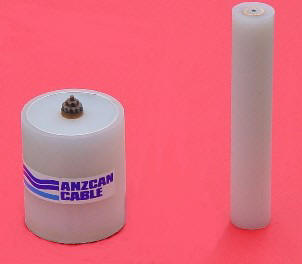 Pacsat,
the parent company of alternative New Zealand tolls company
Telpac, announced it might relocate its Skyswitch and
manufacturing plant to New Zealand ahead of its proposed $21
million local network. After registering as a cut–price network
operator and months of hype, Telpac manager and fraudster
Glen Nicholls, having left a trail of debts behind,
disappeared. US network giant Compuserve acquired Applied
Computing and established a local base providing ‘information
services’ to subscribers of Telecom’s Pacnet service.
Handypoint (National and Westpac) and Cashline (ASB
and Trustbank) merge into a single eftpos network known as
Electronic Transaction Service Ltd.
Pacsat,
the parent company of alternative New Zealand tolls company
Telpac, announced it might relocate its Skyswitch and
manufacturing plant to New Zealand ahead of its proposed $21
million local network. After registering as a cut–price network
operator and months of hype, Telpac manager and fraudster
Glen Nicholls, having left a trail of debts behind,
disappeared. US network giant Compuserve acquired Applied
Computing and established a local base providing ‘information
services’ to subscribers of Telecom’s Pacnet service.
Handypoint (National and Westpac) and Cashline (ASB
and Trustbank) merge into a single eftpos network known as
Electronic Transaction Service Ltd. Telecommunications equipment exports had doubled from 1988 to $15.6 million. PacRim, the first step in the world’s longest undersea fibre optic cable was signed off in Auckland in September. The local connection in the 124,000knm 560Mbit/ link into Hawaii would interconnect with the Tasman 2 cable running to Australia. With Waikato now operating as a gateway for the Internet, the remaining universities take a direct 9600bit/sec feed and begin operating as Kawaihiko, expanding their existing relationship with the DSIR networks. The speed of the TCP/IP connection with Hawaii had doubled from 2.4kbit/sec to 4.8kbit/sec. The IT staff at the universities operating routers, switches and other technology required for Internet access now knew more about this technology than most telco engineers. The first Internet service provider (ISP) Actrix began operation in November with a UUCP link to Victoria University’s Computer Science Department for email and news feeds. Wellington City Council replaced its UUCP link with a direct Internet connection to the Waikato gateway.
|
“In
the lunatic years of the 1980s no-one listened
because so many clever young men in glass towers,
moving pieces of paper around, had everyone’s
attention. It is important however, not to loose
sight of the fact that no true wealth is ever
created until somebody makes something physical.
That’s what creates careers and jobs,” |
The 1990s: With deregulation in telecommunications, broadcasting and banking creating a more openly competitive environment than anywhere else in the world, the debate is how to maximize those opportunities, particularly as the Internet and the worldwide web shift from arcane terms to mainstream use. The term ‘information superhighway’ seems to promise an end to ‘the tyranny of distance’ with telcos and techno visionaries waxing eloquent about a science fictional future where New Zealand could lead the world. Talk of ‘broadband’ and ‘convergence’ of computing, broadcasting and telecommunications add to the frustration as the so-called ‘competitive environment’ fails to deliver.
1990: Pakuranga MP
Maurice Williamson
became the country’s first Information and Communications
Technology minister in Jim Bolgers’ National government and
appoints
Reg Hammond
and
Colin Jackson
to his IT Advisory Group.
A special unit within the Commerce Commission is
working overtime dealing with
complaints about
Telecom,
among them six businesses facing strong
opposition as they attempt to compete in the newly deregulated
marketplace. Action is bought under Section 36 of the Commerce
Act covering
anti-competitive activity.
The legal battles go on for years. Telecom itself is inundated
with complaints from the public about
double billing
from its locally developed
ICMS
billing system which at $73 million is already triple the
planned cost. Telecom has sacked 10,000 people by March 1990 and
made a $300 million profit. It also spent $2 million on a PR
campaign to try and ease public concerns.
Telecom insists 'broadband" ISDN (30 x 2Mb channels) should be
available to all New Zealand homes and businesses by 1995. It
never happens. There are now 58,000 mobile or
cellular
telephone subscribers.
Pay TV company
Sky Television
broadcasting on the UHF band enters the market. In January
MCI-Todd Communications,
having gained network operator status in New Zealand is battling
with Telecom over an interconnection agreement. An ‘in
principal’ agreement is reached by August but six months later
final details are still being debated. The consortium involving
the local Todd Corporation and the state-owned Railways
Corporation in partnership with US telecommunications plans to
create a nationwide network using fibre optic cabling that
straddles the main railway lines. It becomes known as the
Alternate Telecommunications Company and begins private line
operations in December.
On 1 June
Kiwi Cable Company
registered as a network operator, later becoming
Saturn Communications.
Also in June,
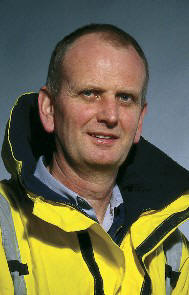 Telecom is sold
to wholly owned subsidiaries of
Bell Atlantic
and Ameritech
for $NZ 4,250 million. This is the biggest business deal in New
Zealand’s history and the sixth biggest deal in the world in
1990. The plan is that the sale will help pay of growing public
debt and ensure consumers get a much better deal. Public debt
and consumer frustration continue to rise. There are now more
complaints about Telecom
than any other business.
KCBBS
makes Usenet and email available. There are a total of 386
newsgroups and a full news feed is 9 - 12 Mb. The Kawaihiko
universities network upgrades from dial-up to dedicated DDS
links and in November the
NZGate
analog link between Hawaii and Waikato is upgraded with a
14,400bit/sec cable link. Initially
the cost of the international link was divided equally among six
universities but as use proved increasingly disproportionate,
volume charging
was introduced based on traffic to and from each university,
late in
1990.
Telecom is sold
to wholly owned subsidiaries of
Bell Atlantic
and Ameritech
for $NZ 4,250 million. This is the biggest business deal in New
Zealand’s history and the sixth biggest deal in the world in
1990. The plan is that the sale will help pay of growing public
debt and ensure consumers get a much better deal. Public debt
and consumer frustration continue to rise. There are now more
complaints about Telecom
than any other business.
KCBBS
makes Usenet and email available. There are a total of 386
newsgroups and a full news feed is 9 - 12 Mb. The Kawaihiko
universities network upgrades from dial-up to dedicated DDS
links and in November the
NZGate
analog link between Hawaii and Waikato is upgraded with a
14,400bit/sec cable link. Initially
the cost of the international link was divided equally among six
universities but as use proved increasingly disproportionate,
volume charging
was introduced based on traffic to and from each university,
late in
1990.
1991: According to Network Wizards there were 1193 New Zealanders connected to the Internet In 1991, within two years this had rocketed to between 10,000 -15,000, one of the fastest growth spurts in the world. Richard Naylor convinced the Wellington City Council to launch Citynet, a FreeNet-based community network offering every citizen free dial-up access to council information. It is the second local authority outside the US to offer such a service. The council also introduced a Gopher server to publish council information online. In July the Victoria University-Waikato Internet link is upgraded to 48kbit/sec to cope with the growth in traffic.
Telecom’s new
owners having learned what they needed about operating in a
deregulated environment take the money and run.
Telecom was listed on the New Zealand, Australian and New York
stock exchanges after Ameritech and Bell Atlantic sold down
724.5 million ordinary shares at NZ$2 each. The Alternative
Telecoms Company, now owned equally by TVNZ, Todd
Corporation, MCI and British Telecom, and becomes Clear
Communications Limited offering a full tolls service exactly
two years to the day (April 1, 1991) since deregulation. Some
issues including rural connection remain outstanding. It begins
services in May with 7000 customers claiming to shave 12-15
percent off Telecom’s toll charges.
Canwest, owners of TV3 launch a second free-to-air channel
TV4, Telecom introduces ISDN (integrated services
digital network) and on April 5th local
business call charging makes that service impossible expensive
as it uses two channels and Telecom charges for both.
Telecom also outlines plans for full optical switching,
wireless broadband ISDN, metropolitan networks running at
hundreds of Mbit/sec and on-demand integrated broadband and
mobile services over the next decade in its Vision 2000. In
August Telecom introduces its Centrex system, a virtual
PABX to centralise inbound and outbound calls or diversions to
branch offices, cellphones, or voice mail systems. Fujitsu
partners with Compuserve, which has 700 users across both
countries and plans to set up two large databases in Australia
and New Zealand. It hopes to have 100,000 local users within
5-years. Netway Communications managing director
Malcolm Dick believes competing with his half owner Telecom
is ‘good and healthy’. He’s using Aussat for trans-Tasman
communication and considering leasing space from Clear
Communications.
There is talk about the government actually getting involved in helping to fund a science and research network with the National Library joining with the universities Kawaihiko network. Dr Ian Forrester, the first chief scientist of the newly formed Ministry of Science Research and Technology (MoRST), championed the idea but when he left it languished. A bid was then put forward for funding based on a Cabinet directive in 1991 for a nationwide network initiative. All the interested parties got together but then there was a dust up with the DSIR claiming it had developed its own systems and directions which threw a spanner in the works. DSIR then made its own bid to run the network and managing the Internet While some funding for DDI links was made available, failure to agree on a common strategy, meant any government support for a common network turned to custard.
1992:
At the peak of bulletin board (BBS) popularity around 1990-1992,
there were estimated to be around 150,000 computers in New
Zealand homes, over 100 BBS and thousands of subscribers, many
logging into multiple discussion boards in search of specific
information and mental stimulation. In Feb the 14.4kbit/sec
analogue satellite link to Hawaii was replaced with a 64kbit/sec
satellite link to NASA’s Ames Space Research Centre in
California.
A nz.netstatus posting on 3 March 1992 ( Message-ID:
<1992Mar3.110908.6750@waikato.ac.nz>) says
>We are expecting to have sun outages affect circuits from
>NASA Ames to Australia (AARNet, 139.130 net) and New Zealand (Univ
of
>Waikato, net 130.217) for the next 4-5 days (March 1-5, 1992).
Victoria University Computer Science Department transformed an
unauthourised debt situation, created by the cost of its
international connections to keep pace with the Internet
evolution, into a quarter of a million dollar revenue stream.
It was charging ISPs and businesses for use of its bandwidth.
Without any research funding and few who understood what they
were up to, they were simply being entrepreneurial. Even
Auckland University handed its modems over to Victoria
which was also providing services to pioneering ISP Actrix,
run by John Vorstermans and Paul Gillingwater.
Soon Actrix was on campus and handling the commercial side of
the business.
Growing demand from home users wanting access to news groups and
email resulted in the Jon Clarke’s Status bulletin board
system transforming into the Internet Company of New
Zealand in 1992 and relocating its equipment from a Parnell
garage to Airdale St, opposite the Telecom central Auckland
exchange. Soon it was expanding into the business market and one
of its first customers was the Pelican bar on Elliot Street, run
by brothers Tim and Nick Wood.
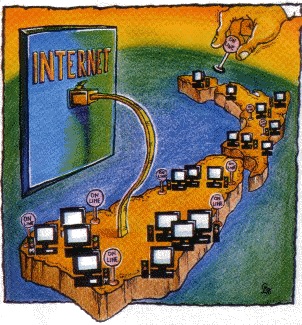 Meanwhile
the Crown Research Institutes Act 1992 split the DSIR
into nine Crown Research Institutes (CRIs) from July.
MAFnet was also reworked as a profit making enterprise and
they all began competing with each other for funding and
resources. That delayed the formation of the new Tuianet
(sew together or bound together) management group, administered
by the Tuia Society, with a mandate for connecting New
Zealand to the Internet and the inter-networking of
universities, the National Library, the CRIs and the
Ministry of Research, Science and Technology. Ultimately the
DSIR network became CRInet managed by the newly formed
Industrial Research Ltd (IRL) and it was agreed to go with
frame relay technology to standardise and speed up the network
links across the country.
Meanwhile
the Crown Research Institutes Act 1992 split the DSIR
into nine Crown Research Institutes (CRIs) from July.
MAFnet was also reworked as a profit making enterprise and
they all began competing with each other for funding and
resources. That delayed the formation of the new Tuianet
(sew together or bound together) management group, administered
by the Tuia Society, with a mandate for connecting New
Zealand to the Internet and the inter-networking of
universities, the National Library, the CRIs and the
Ministry of Research, Science and Technology. Ultimately the
DSIR network became CRInet managed by the newly formed
Industrial Research Ltd (IRL) and it was agreed to go with
frame relay technology to standardise and speed up the network
links across the country.
Tuia continued to work behind the scenes to mange domains and
cover off all the related administration issues to do with
ensuring nationwide coverage, and as demand grew, increase the
speed and availability of bandwidth. From late 1992 the more
robust network, which now connected all seven universities,
began operating at 48kbit/sec over Telecom’s frame relay
network, with digital leased line links to smaller sites.
Meanwhile Clear and Telecom finally reached a full
agreement on local service interconnection and engage in
a price war over toll calls. Wellington City Council
upgraded its Internet link to 48kbit/sec. In March Telecom
switched on the $200 million Tasman 2 submarine fibre optic
cable between Australia and New Zealand - the first stage in
the massive Pacific Cable network due to ring the Pacific basin
by 1994. Telecom introduced the No 7 signaling to add
value to 0800, 0900, automated calling card services, Centrex
and private networking and enhanced ISDN services,
introducing the concept of the ‘intelligent network’. Telecom
claimed to have invested $3.3 billion in its infrastructure to
date. In the first step toward transparent and open local
government using the Internet, IT manager Richard Naylor
put the Wellington City Council by-laws on-line.
The World Communications Laboratory (WCL) is established
to promote New Zealand as a centre of excellence for developing
and using broadband connections capable of supporting voice,
data, video and graphics. There’s initial funding from
government, business and carriers, then after enthusiastic
support from science and research leaders and senior ministers,
the government and Telecom pulled the funding plug and WCL went
down the gurgler.
|
“Making sausage and creating a competitive market is not always a pretty thing to watch,” Peter Shirtcliffe, chairman Telecom, TUANZ conference, Aotea Centre, Auckland, 11 August 1992. “Telecom has become the defacto industry regulator; it owns or controls most of the critical inputs, it competes with all the firms to which it supplies those inputs and, by and large, it makes the rules under which competition is permitted to take place,” Commerce Commission report, 1992. |
1993: Internet governance was at crossroads, it could no longer be contained within the academic world and while the Tuia Society AGM in 1993 agreed it was no longer representative no other body seemed willing to step up. With Waikato charging Tuinet for international traffic and Tuianet was now being charged by Waikato for international traffic and had to pass on costs to its members. In October Nevil Brownlee from the University of Auckland released his NeTraMet, network traffic meter to help universities and ISPs with IP traffic accounting. The Tuianet members planned to use their collective buying power to force the carriers to deliver a better deal for bandwidth but while they were negotiating the deal, the carriers went to each university separately effectively destroying their collective bargaining stance. Tuianet effectively lost control of the development of networking for research and education in New Zealand because everyone went to different suppliers. The parties rarely met again.
The Government had failed to step in and take the lead in
creating a framework or funding for this network which was
essential to the nation’s future academic and research
capabilities. It took a hands-off approach, leaving it up to
commercial interests. And so it was, government r&d was held
to ransom by market forces from that day on and demand for
Internet services continued to escalate. The increased flow of
traffic forced the doubling of capacity from the Warkworth
satellite station to NASA’s Ames research facility in
California’s Silicon Valley to a 128kbit/sec satellite circuit.
The $500 million PacRim East undersea fibre optic cable
between New Zealand and Hawaii, a partnership between Telecom,
AT&T, KDD and Telstra, Australia becomes fully operational in
June, offering voice, video and data transmission.
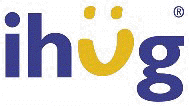 Victoria
University undergraduate Nathan Torkington reckons he was
the first to create ‘a real web site’ in New Zealand with actual
useful information on it. He was part of the WWW Talk mailing
list where all the software developments were posted and ended
up sharing ideas and data with web pioneer Tim Berners Lee and
Mosaic founder Mark Andreessen. Torkington became sought after
to share his web development skills with Kiwi academics and
pulled together everything he knew to created the first
Worldwide Web FAQ which was published on 6 April 1993 in the
Usenet news groups and was ultimately reprinted in "a ton of
books".
Victoria
University undergraduate Nathan Torkington reckons he was
the first to create ‘a real web site’ in New Zealand with actual
useful information on it. He was part of the WWW Talk mailing
list where all the software developments were posted and ended
up sharing ideas and data with web pioneer Tim Berners Lee and
Mosaic founder Mark Andreessen. Torkington became sought after
to share his web development skills with Kiwi academics and
pulled together everything he knew to created the first
Worldwide Web FAQ which was published on 6 April 1993 in the
Usenet news groups and was ultimately reprinted in "a ton of
books".
Colin Jackson is convinced his efforts inside government
meant New Zealand was one of the first nations to get an
official government web server up and running with help from
the experts at Victoria University. His team also ran the first
election night web server with real time results which didn’t
actual melt down.
The NASA subsidised Internet satellite connection with the US
backbone doubled in July for the third time in three years to
256kbit/sec. Rather than the clumsy PACCOM moniker for the
access gateway at Waikato, the term NZGate began to be used.
In June and again in August Simon Lyall’s ‘Internet Access in
New Zealand FAQ’ was posted on Usenet to help bring
‘newbies’ up to speed on Internet etiquette and how to find
their way around.
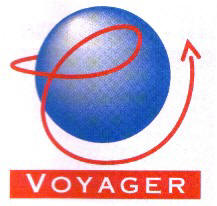
Meanwhile Bellsouth launched the first mobile phone network to compete with Telecom. Telstra purchased 20-year rights to operate a second mobile network then sold its spectrum to Bellsouth in return for mobile services. Ameritech and Bell Atlantic had by this stage reduced their Telecom shareholding to a combined 49.6 percent. According to Statistics New Zealand average residential phone call pricing plummeted 50 percent between 1987 and 1993. In July KCBBS became Internet connected with a 48kbit/sec to Auckland University Computer Center. CellularVison, an Auckland based company promises a 49 channel wireless TV and data network which could also be used for phone calls and on-line shopping is promised. It never happens. Trevor Rogers MP, introduces Technology and Crimes Reform Bill into Parliament which would have the effect of making ISPs responsible for "objectionable material" carried by their networks. It never happens. There are about 10,000 Kiwi Internet users.
1994: NASA had been scaling back its funding for the international link to Waikato University and the cash ceased to flow from 30 April 1994. However Waikato’s controversial volume charging approach ensured there was sufficient cash in the coffers to cover ongoing charges including increases in bandwidth. Later in 1994 Waikato’s international link to the West Coast of the US, supplied by AT&T, had an embarrassing outage. It failed during during a demonstration of the commercial possibilities of web connectivity at the Computerworld Expo in Auckland. A technician at the AT&T exchange in San Francisco had accidentally knocked out a plug. It took six hours to sort out. A sort time later the AT&T circuit failed again forcing Waikato to put in a back up circuit to the NASA gateway with Sprint.
 Clear
and Telecom are engaged in major legal battles over
competition law ending up with a Privvy Council decision
backing Telecom's right to maintain its monopolistic activities.
In June Telecom forms a joint venture with Taranaki Polytechnic
for a cut-down Internet access product for schools and other
special interest groups, called NZ Online. In September
Telecom’s Netway Communications announces a retail ISP
service for corporate customers will launch in six months. It
doesn’t. BellSouth network is now transmitting data and
soon achieves 80 percent coverage. According to Net Wizards
and a report by Colin Jackson at the Ministry of Commerce, New
Zealand’s Internet goes through a rapid growth spurt,
leading the world in uptake before settling back to ‘normal’
80-100% percent growth rates which are now common.
Clear
and Telecom are engaged in major legal battles over
competition law ending up with a Privvy Council decision
backing Telecom's right to maintain its monopolistic activities.
In June Telecom forms a joint venture with Taranaki Polytechnic
for a cut-down Internet access product for schools and other
special interest groups, called NZ Online. In September
Telecom’s Netway Communications announces a retail ISP
service for corporate customers will launch in six months. It
doesn’t. BellSouth network is now transmitting data and
soon achieves 80 percent coverage. According to Net Wizards
and a report by Colin Jackson at the Ministry of Commerce, New
Zealand’s Internet goes through a rapid growth spurt,
leading the world in uptake before settling back to ‘normal’
80-100% percent growth rates which are now common.
In October 1994 Naylor runs a webcast from the Michael Fowler
Centre of the Tawa Schools Music Festival. There were 16 viewers
in 12 countries but it was something few people had done before.
At this stage Mbone tools were just starting to emerge, and the
Rolling Stones famous Internet concert was still a month away.
The third stage of the Pacific cable network connecting
New Zealand and Australia with Asia via Guam comes into
operation by the end of the year.
Early in 1994 the number of registrations of dot.co.nz exceeded dot.ac.nz registrations. Waikato University was keen to back off from its management role of what was now clearly no longer an academic network but a commercial enterprise. If the trend continued dot.co.nz commercial registrations would overtake the rest in May 1994 and that’s exactly what happened. Frank March, John Houlker and others proposed an independent democratic organisation to take over the domain name service. In November, the Tuia Society held a public meeting to establish a new body to manage Internet infrastructure development.
1995:
Internet Society of New Zealand (ISOCNZ) was officially
incorporated in November and began to take over the
responsibilities of manage the dot.nz domain and the business
surrounding overall responsibility from Waikato University for
Internet development in New Zealand. There were approximately
2000 domain names in the .nz register.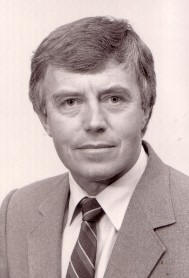
The Pacrim West cable (Sydney—Guam ) came into service. Since acquiring spectrum in 1989, BellSouth had invested nearly half a billion dollars into building its nationwide cellular network and was pinning its hopes on a new digital mobile technology, known as Global System for Mobile communications, (GSM). It now had 95 percent coverage, the same as Telecom. Clear Communications had spent $8 million trying to resolve ongoing disputes over conditions and cost of interconnection before it reached an agreement on local service interconnection. Clear achieved an estimated market share of 23 percent during its four years of operation while Telecom had enjoyed seven consecutive quarters of revenue growth, and an earnings growth rate that ranked it with the top 15 percent of telcos worldwide.
In January Telecom was in discussion with Microsoft
about a joint venture. Telecom announced plans to construct a
hybrid fibre -co-axial cable TV and data network to about
300,000 homes. It begins trialling its First Media
programming with more than 20 channels of TV to the Auckland
suburbs of New Lynn and Pakuranga promising an extended range of
new entertainment and interactive information services are
ahead. In April Victoria University’s Internetworking Group
changed its name to NetLink, offering leased-line, dialup and
hosting services. By August it had taken over management of
university Internet connections. The NZGate link at Waikato was
upgraded to 1Mbit/sec. Wellington City Council’s Citynet stopped
accepting new users.
After operating alongside Iconz during 1994 Nick Wood
moves his business, the Internet Home users Group (Ihug),
across town and is soon joined by his brother Tim. In
November In November 1995, stiff new competition arrives in the
form of Voyager with the full backing of Australia’s
largest ISP, Ozemail. Wellington pioneer Richard Naylor is at it
again, positioning a web camera on Mt Ruapehu after it
began to rumble and let off a bit of steam. He wrote some
software, borrowed Jim Higgins’ laptop, and a cellphone
from Telecom, ‘acquired’ a Wellington City Council video camera
and set it up so a PC server downloaded an image every 15
minutes. The site achieved three million hits in three months.
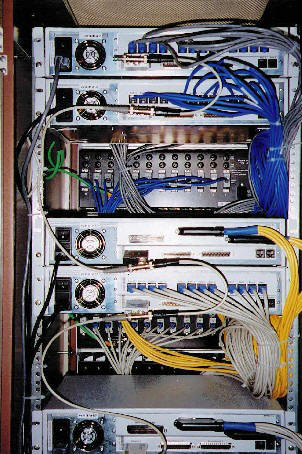 In
May 1996 Actrix introduced a $5 monthly ‘community
service’ which gave users free email through the non-profit
PlaNet New Zealand network. ISP Cybernet launched as DoS
(Denial of service) attack on Iprolink's public
demonstration of the Internet in Auckland. Cybernet's upstream
provider Auckland University responded by disconnecting them.
Nick and Tim Wood and their father John form Internet service
provider Ihug (Internet home users group) and are quickly
pioneering flat rate ‘all you can eat’ dial up. Voyager
launches, offering access for $10/hr, and 0800 access. There are
an estimated 84,420 modems in use in New Zealand (IDC)
with connection capabilities rapidly moving up from 9.6kbit/sec
to 28.8kbit/sec. About 60 per cent of companies now have LANs or
WANS.
In
May 1996 Actrix introduced a $5 monthly ‘community
service’ which gave users free email through the non-profit
PlaNet New Zealand network. ISP Cybernet launched as DoS
(Denial of service) attack on Iprolink's public
demonstration of the Internet in Auckland. Cybernet's upstream
provider Auckland University responded by disconnecting them.
Nick and Tim Wood and their father John form Internet service
provider Ihug (Internet home users group) and are quickly
pioneering flat rate ‘all you can eat’ dial up. Voyager
launches, offering access for $10/hr, and 0800 access. There are
an estimated 84,420 modems in use in New Zealand (IDC)
with connection capabilities rapidly moving up from 9.6kbit/sec
to 28.8kbit/sec. About 60 per cent of companies now have LANs or
WANS.
There are 500 domain names in New Zealand registered with
the US-based administration body IANA. According to the
Statistics Department the telecommunications market is worth
around $3.6 billion. It’s estimated 23 per cent of
New Zealanders have PCs at home. The Ministry of Commerce
estimates 60,000 to 100,000 New Zealanders are online.
There are about 12 ISPs, the standard fare is $10 per megabyte
for downloads. Network Wizards says 53,610 hosts and 9,472,000
worldwide.
1996:
Clear, now 100 percent owned by British Telecom,
launched its ISDN offering in May and an ISP Clear.net in
November. It had 330,000 customers and 20 percent market share,
and reluctantly signed a new interconnection agreement with
Telecom for two cents a minute for traffic termination.
Telstra entered the market focusing on the corporate
customer and began building fibre rings in Auckland, Wellington
and Christchurch. Kiwi Cable was investing $40 million in
expanding its fibre network to pass 50,000 homes by the end of
the year, working in closely with power companies to string up
its cable. Telecom establishes an exchange in the US for
international traffic.
Telecom owned Netway Communications, a joint venture
between Telecom and Freightways, began providing bandwidth and
Internet-related services to business. Waikato University’s
NZGate stopped reselling international Internet bandwidth
from Netway, opening up the wholesale bandwidth market to Clear
and later Telstra. NZGate is scaled down and is replaced
by the NZIX Internet exchange. Pronet, a
cooperative between ISPs Actrix, Iprolink, and Plain
Communications begins buying bulk backbone bandwidth from
Telecom and Clear for network peering. ISPs are connected via
frame relay. Citynet, Wellington’s pioneering experiment in
community Internet access is decommissioned. NetLink moves into
Christchurch and Dunedin. Telecom extends the rollout of its
fibre-coax cable network in parts of Auckland and Wellington
for delivery of its First Media pay television content
services. Telecom claims 300,000 cellular customers and
BellSouth around 40,000 - that's about 11 percent penetration,
compared with Australia which has 17 percent. According to Paul
Budde Communications, the year ended with cellular market
revenue growing 53 percent over 1995 with 380,000 subscribers,
up 16 percent. Telecom's ISDN service only has 500
customers growing to 1000 by the end of the year. There’s
outrage that it's charging too much ($500 installation and
$120-$150 per month).
|
“Inevitably the world will be linked by broadband networks and if New Zealand gets a leading edge this could help us move from the traditional primary production sector into value added industries capable of matching international niche market demands. Computing and communications technologies will generate an entirely new way of life where distance and international markets will no longer be an impediment to product development,” Dr Ian Forrester, New Zealand’s chief scientist, January 1992 |
Competition among ISPs changed dramatically in May-1996 with the
entrance of Telecom Online Services (TOLS) which soon
changes its name to Xtra. New Zealand’s Internet
uptake is among the highest in the world growing 15 percent
per month. There are now about 30 ISPs and more than
160,000 users. The Internet Company of New Zealand (Iconz)
is top dog with about 12,000 subscribers, Voyager has
about 10,000, CompuServe 6000 and Actrix 3000. Xtra is
immediately in a commanding position through its access to every
town and city and its huge marketing ability. The arrival of
Clear communication’s Clear.net six months after Xtra
again puts the wind up the fledgling market. Voyager halves its
hourly rate to $5 and in August Xtra follows suit dropping its
hourly rate to $2.50. The price wars take a toll on
smaller ISPs with rates down to $1.50 per megabyte and .50 cents
for local traffic.
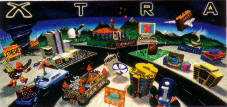
ISOCNZ in taking over the administrative role of
‘managing the Internet’ hadn’t entirely bargained on what that
might entail. Most New Zealand domain names were still
managed and moderated manually at Waikato University by Rex
Croft who was considered New Zealand’s ‘father of DNS’. As
the pressure came on Waikato began charging for its technical
services and set a deadline to hand over the responsibilities.
The commercialisation of the domain name space was done
in a ‘big bang’ exercise on July 22, 1996. A fee of $96.75
including GST and administration costs stuck in the craw of
Internet users who had been used to getting domain names free.
In October 1996 ISOCNZ had, on legal advice, established a
subsidiary company, The New Zealand Internet Registry Ltd
(trading as Domainz) to run the domain name register.
The Internet Service Providers Association (ISPANZ) is
formed to represent the interests of ISPs and their customers,
largely in response to Xtra’s price cuts. In June Xtra boss
Chris Tyler said Xtra is three months away from delivering an
Eft-Pos direct payment service. It never happens. A major
security issue with Xtra forces Telecom to shut down its
mail server in August after it was discovered hackers could
easily get access. Customers were advised to change their
passwords. Ihug merges with Efficient Software. On
October 12 there was Web coverage of the 1996 General
Election.
New Zealand has an estimated 241,000 pay TV subscribers
and 5000 cable TV users and around 30,000 eftpos terminals. In
March IT minister Maurice Williamson launches Impact 2001
– How IT will change New Zealand. Words like e-commerce,
multimedia, convergence and smart cards are now in everyday use.
The second annual IT industry survey shows a 61 percent
increase in exports of communications hardware to $142 million.
A survey of schools shows nearly all schools have fax
machines. There is now one computer per 18 students in
primary schools and one per 10 students in secondary schools.
More than half the computers were older than three years.
The percentage connected to a modem in primary schools had
increased to 37% (14% in 1993) and secondary schools to 73
percent (44% in 1993) The main obstacles for greater penetration
were seen as the high cost and lack of teacher training.
1997: To date 95.7 percent of all New Zealand households have a telephone, comparable to Australia and higher than the US. Clear Communications, which now has an 8 percent market share, begins withholding interconnection fees from Telecom in February, and in July sues the government for failing to act against Telecom’s alleged anticompetitive behaviour. By November Clear and Telecom agree on number portability and Clear begins providing local access service to Auckland, Wellington and Christchurch. Telecom launches its Internet access service IPNet in January as an 0800 gateway for commercial ISPs wanting national Internet access for local call prices.
Concerns about the stability of the Internet in New
Zealand were further fuelled in May when the main gateway at
Waikato University became overloaded shutting down international
access for eight hours. More secondary domain name servers (DNS)
were added to the backbone. Clear pulled MCI circuits
back to Auckland, to avoid tromboning international traffic to
Waikato and back and Clear. Telecom, Telstra NZ began discussing
peering in Auckland with a triangle of 2Mbit/sec circuits
provisioned between the three telcos as an interim measure.
Auckland’s iconic Sky Tower was the ideal location for an
independent Auckland peering exchange (APE). Saturn
Communications (Saturn) entered the residential phone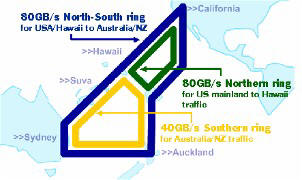 market in Wellington after signing an interconnection agreement
with Telecom. The industry complained Telecom was offering
better prices for bandwidth to it’s wholly owned ISP Xtra
(which now has 45,000 customers) than other ISPs. The
Commerce Commission decides it is within its rights to do
so.
market in Wellington after signing an interconnection agreement
with Telecom. The industry complained Telecom was offering
better prices for bandwidth to it’s wholly owned ISP Xtra
(which now has 45,000 customers) than other ISPs. The
Commerce Commission decides it is within its rights to do
so.
New Zealand was assured it had all the international
communications capacity it would ever need with PacRim East,
PacRimWest and Tasman 2 fibre optic undersea
cables linking us to the rest of the world. By mid-1997 the
entire capacity was booked up largely due to the "remarkable
growth of the Internet". In July Telecom New Zealand, Optus and
MFS Globenet (later acquired by WorldCom) agree to sponsor the
Southern Cross cable. Telecom announces a 5-year $30
million contract with Newbridge-Siemens to futureproof
its backbone network with ATM (asynchronous transfer
mode) technology.
In August, British Telecom increases its stake in
Clear to 50 percent taking over MCI's 25 percent
shareholding. BellSouth and Singapore Technologies Ventures
announced the sale of BellSouth New Zealand to the Vodafone
Group for NZ$750 million. In October Ihug is the first
ISP to launch residential broadband using satellite
bandwidth through an arrangement with PanAmSat to
providing an additional path for inbound traffic. It serves
Auckland customers via a microwave link from the Sky Tower
at download speeds of between 256kbit/sec and 2Mbit/sec and
expands to satellite coverage in 1998. After reaching about
30,000 Internet users in New Zealand Ihug ventures across the
Tasman, offering bandwidth via satellite in Sydney and
Melbourne.
|
"I'm sorry but your call cannot be connected right now because of overloading, please try again later," Telecom’s phone message that reappeared frequently in the late 90s as the public network was groaning under the weight of exponential Internet growth. |
Telecom pulls the plug on its HFC cable roll out and
First Media content business after passing only 68,000
homes. It claims there are more appropriate technologies to
carry fast data and video. It will continue to look at the
relevance of fibre to the curb. Telecom and cable partner
Ericsson are caught in a slew of law suits with contractors
that goes on for another two years. In December Telecom launched
a technology trial of DSL (digital subscriber line)
technology from the Kandallah exchange in Wellington and hedged
its bets upgraded another 11 exchanges for ISDN
capability. A Ministry of Commerce report showed its tariffs
were between 49-97% higher in many cases than similar markets so
Telecom dropped ISDN prices twice, resulting in resulting in
much increased uptake. It also reduces prices on the
controversial 2Mbit/sec Megalink and metropolitan DDS
and links at 64kbit/sec and above. In November 1997 Telecom
announced a $700 million project to upgrade or replace 150 old
NEC NEAC digital exchanges which it admitted were the
bottleneck in its attempt to meet market demand. A decade later
the NEACs in the system were still being blamed for bottlenecks.
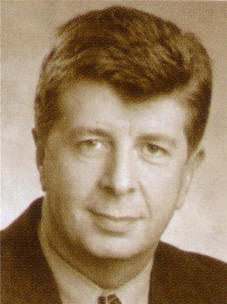 Telecom
withdraws its membership of the Telecommunications Users
Association (TUANZ) because of a perceived bias. ISOCNZ
established a subsidiary company The New Zealand Internet
Registry Ltd (trading as Domainz) to run the domain
name register. ISOCNZ registers 15,000 domain names. It’s
estimated there are 393,000 Internet users across
business, education, government and home, an increase of around
46 percent over the previous year. About 30 percent of New
Zealanders now have PCs.
Telecom
withdraws its membership of the Telecommunications Users
Association (TUANZ) because of a perceived bias. ISOCNZ
established a subsidiary company The New Zealand Internet
Registry Ltd (trading as Domainz) to run the domain
name register. ISOCNZ registers 15,000 domain names. It’s
estimated there are 393,000 Internet users across
business, education, government and home, an increase of around
46 percent over the previous year. About 30 percent of New
Zealanders now have PCs.
The Internal Affairs Department's Government within Reach (GWR) project launched in 1995 took two years to come up with proposals for the way forward, even then most weren’t acted on because less than one third of government agencies showed any interest. In 1997 the government Internet presence was further reviewed with a mandate to help close the gap between "information haves and have nots" and ensure equal access to all public data. The assessment was made that by 2002 a maximum of 60 percent of the New Zealand population would have access to the Internet so there was an urgent need for action. The government however still considered it was still too early to commit to a public network to distribute its information. The first hint of digital television becoming a reality for New Zealand’s free-to-air broadcasters came late in 1997 as Broadcast Communications Limited (BCL), the State-owned infrastructure company began re-broadcasting TV2 in digital format for 10-days from a van moving around Auckland.
Over the past five years the New Zealand
telecommunications market had stable growth of 8-11 percent
per annum and has topped $4 billion for the first time
including voice, data networking, mobile services, equipment,
directories and related revenues. Mobile revenues overall
were $368 million a 4 percent increase, representing a 36
percent growth in subscriber numbers to 520,000. In November the
Ministry of Commerce proposed Telecom be required to produce
separate financial statements for its local loop and other
businesses and to undertake a full economic costing of the
Kiwi Share Obligations.
A further buy-back of shares by the Telecom in late 1996,
meant Ameritech and Bell Atlantic had recovered 85
percent of their original investment. The company was now worth
about $7 billion and the investors had graded the bulk of the
profit (around 70 percent a year). In November 1997 Bell
Atlantic and Ameritech having begun investing in more recently
deregulated markets announced they were off.
In the words of financial analyst Brian Gaynor: "Their
combined 90 percent shareholding cost $3.8 billion yet they have
received an estimated $5 billion from dividends, a capital
repayment, share buyback and the sale of shares in the 1991
float and in 1992 and 1993…Thus the two American
telecommunication giants will exit New' Zealand with an
estimated total realisation, including dividends, of $11.5
billion, compared with the original investment of just $3.8
billion."
1998: In
the past Internet traffic has had to travel to NZGate, sometimes
via the US, before being distributed to users across town.
Clear, Telecom and Telstra and Auckland and Waikato universities
are working on ways to increase performance and improve routing.
All traffic currently runs over a 512kbit/sec frame relay
connection. Some ISPs have alternative access into the US to
avoid network congestion. Telecom and Clear take over running
NZGate, the main Internet gateway into New Zealand
previously managed and maintained by Waikato University with
plans to increase its speed and robustness. Telecom is also
looking at upgrading its IPNet digital Internet
distribution network to more efficiently distribute video and
audio to Xtra subscribers.
The network operators NZNOG list is created in February
and by June has 18 subscribers. There are now 26 companies
providing various levels of competitive telecommunications
services in New Zealand. In July the Internet Exchange (NZIX) is
upgraded from a single Cisco CAT 5000 switch to two fully
redundant Cisco WS-2926 switches. Netway Communications
is pulled back into the Telecom fold in March to look after
fully managed network services. Southern Cross Cables,
half owned by Telecom, announces its plans to build a new fibre
optic cable linking New Zealand with Australia and North
America. Vodafone buys BellSouth which now has about
130,000 mobile customers compared to Telecom Mobile’s 500,000.
Telecom is involved in a number of legal proceedings
including lawsuits mainly bought by Clear relating to Telecom’s
right to provide pay TV, Internet, bundling practices and terms
of interconnection. Clear threatens to withhold billing
information from Telecom. It now costs 60 cents for a 3 minute
off-peak toll call between Auckland and Wellington ($2.84 a
decade ago) and $1.46 for a 3 minute off peak call to Australia
($4.20 a decade ago). There are only 200 party lines left
(38,000 a decade ago). In April the annual NUS International
survey found that while New Zealand business local calls
were among the cheapest in the world, business line rentals and
national toll calls are among the most expensive. ClearNet
begins selling international bandwidth on MCI’s PacRim East
cable to local ISPS. Voyager goes nationwide with
its 56k service and has installed a satellite dish for better
international links. Ihug now has two 34Mb satellite
feeds into Napa Valley in San Francisco to earth stations in
Auckland, Sydney, Melbourne, Wellington, Christchurch and
Dunedin. It transmits 85 percent of its Internet traffic via
satellite and adds Brisbane and Adelaide to its footprint.
Iconz buys three new Cisco boxes which each take
120 phone lines. They announce grand plans to become a
pseudo-carrier. They already offer videoconferencing and
streaming video and are talking about voice over the Internet.
By September Ihug and Xtra unable to keep pace with the
dialup revolution booked up all new ISDN lines out of Auckland’s
Mayoral Drive Exchange for the next six months. Saturn
Communications begins offering bundled voice, Internet and
pay TV in Wellington passing 100,000 homes with 25 percent
penetration. Capital Networks a joint venture with the
Wellington City Council and 20 shareholders including Clear,
Saturn and INL launches a new gigabit Ethernet network over
fibre through the city centre. It eventually becomes CityLink
which provides connectivity between customers and ISPs and
begins organised peering services. The National Library begins
peering over the Wellington Internet exchange (WIX) using a 386
notebook with two Ethernet cards running Linux, with Clear,
Iconz, Netlink, Paradise, CityLink.
Telecom's First Media content service closes and all
services stop on July 31.Telecom’s commercial trial of DSL
fast Internet to 200 customers in Wellington continues. There’s talk of a roll out to exchanges
across the country starting in March and services including
cheap high speed data and pay-TV. Sky TV introduces its
digital satellite service with over 40 channels plus
delivering free to air and is the only digital platform in New
Zealand. The average PC costs $3400, about $500 more than buyers
in the US are paying. Modem speeds are now 56k for dial up
access although everyone’s waiting for digital subscriber line
(DSL) to roll out. There are now about 60 ISPs and varying
reports about the number of Internet users. IDC estimates ISP
revenues — mainly from providing access services — will
reach in excess of $116.7 million by the end of the year. This
year IDC downplays Internet user numbers to 315,020,
other reports claim 501,256 (an initial projection from IDC used
later by Telecom), while AC Nielson says it’s more like 741,000
largely from what the ISPs claim about their own take-up. Major
ISPs make their own claims: Xtra (150,000), Clearnet (70,000),
Ihug (about 60,000) Voyager (28,000). Not far behind are Iconz,
CompuServe and Iprolink trailed by dozens of
smaller players. There are different methodologies in play but
the real figure is likely to be around 400,000.
Wellington continues. There’s talk of a roll out to exchanges
across the country starting in March and services including
cheap high speed data and pay-TV. Sky TV introduces its
digital satellite service with over 40 channels plus
delivering free to air and is the only digital platform in New
Zealand. The average PC costs $3400, about $500 more than buyers
in the US are paying. Modem speeds are now 56k for dial up
access although everyone’s waiting for digital subscriber line
(DSL) to roll out. There are now about 60 ISPs and varying
reports about the number of Internet users. IDC estimates ISP
revenues — mainly from providing access services — will
reach in excess of $116.7 million by the end of the year. This
year IDC downplays Internet user numbers to 315,020,
other reports claim 501,256 (an initial projection from IDC used
later by Telecom), while AC Nielson says it’s more like 741,000
largely from what the ISPs claim about their own take-up. Major
ISPs make their own claims: Xtra (150,000), Clearnet (70,000),
Ihug (about 60,000) Voyager (28,000). Not far behind are Iconz,
CompuServe and Iprolink trailed by dozens of
smaller players. There are different methodologies in play but
the real figure is likely to be around 400,000.
Kawaihiko, the defacto science and research network, shuts down at the end of 1998 and former gateway manager John Houlker, having done himself out of a job, joins Telecom International Networks. His first project was to establish new landing points for its international circuits in Los Angeles and at the Palo Alto Internet exchange.
|
"New Zealand is an
impoverished and undernourished Internet community
because of what hasn’t come out of Wellington. We’re
dealing with people in the US who have larger pipes
than the whole of New Zealand. We have a controlled
situation here where the key players are extracting
as much as they can from the Internet community,”
|
1999: In
December 1998 IPNet had clocked up 87 million call
minutes and been through a major upgrade now Telecom used its
monopoly position as ‘owner’ of the local loop to force the
entire Internet community to shift across to a new dial-up
access network. Telecom claimed its public switched network
was creaking under the strain of domestic Internet users hogging
the lines and gave ISPs until 1 August 1999 to add an 0867
access number to IPNet or face a two cents per minute charge
after an initial 10 hours on-line per month. ISPs were
outraged, believing they were being blackmailed as part of a
commercial tactic, when they were smack in the middle of a price
war over flat rate accounts. The 0867 prefix also
by-passed existing interconnection deals, depriving rival
carriers of termination fees from Telecom. The deal was rejected
by Clear. An inquiry was underway.
In March the idea of a neutral peering point in Auckland is
discussed. A cabinet and switch are installed on level 48 of the
Skytower and the peering point officially referred to
as APE (Auckland Peering Exchange) is opened in June
(although the first routes aren’t actually exchanged until
August). Later in the year the APE switch is replaced with new
hardware donated by Roger de Salis at Cisco. Telecom
becomes an Australasian company by buying 78 per cent of AAPT
Australia’s third largest telco. It also signs an outsourcing
deal for all its IT systems with EDS worth $1.5 billion
over the next 10 years and launches a new nationwide payphone
network using smart card technology. In May Xtra, the
country's largest ISP announces flat-rate access to the
Internet for $39.95 a month after Clear announced it intended to
do the same. Ihug has been offering flat-rate access for several
years. In June Vodafone announced it would spend $200
million over two years upgrading its cellphone network to
cope with increased demand. In June 1999, Telecom had,
undercover of the 0867 confusion, Telecom finally let its fast
Internet service out of the bag but the pricing and performance
proved disappointing to many business and domestic users.
Jetstream used RADSL (Rate Adaptive Asymmetric Digital
Subscriber Line) technology, to compensate for the bad condition
of much of our copper cabling, allowing data to be sent down a
normal telephone line without impacting normal telephone
conversations; 69 exchanges were converted. No-one talking about
pay-TV over DSL anymore – it was simply a data service. The
cheapest Jetstream service allows 600Mb of data a month for $89
(including GST). Installation and modem costs are extra. Clear’s
$5.5 million switch, went live in Christchurch as a main
switching point for tolls, data and local traffic for its South
Island customers, previously, handled in Wellington.
BT increases its shareholding in Clear Communications to
100 percent. Clear invests $14 million in fibre backbone
technology with Nortel. Telstra buys ISP Netlink from
Victoria University. TradeMe launches in March 1999 as a
classified auction site like e-Bay, but initially specialising
in computer parts and systems. In August Saturn launched
its residential Internet access over its cable network through a
cable-modem and an Ethernet card in the PC. Telecom plans to
replace its mobile network with new cdmaOne digital technology
optimised for high-speed mobile data transmission. It’s expected
to be live by 2001. The $2 billion Southern Cross cable
lands on Takapuna beach in Auckland and once its live will be
the highest capacity route between Australia, New Zealand and
North America. The Government is satisfied with Telecom's
initiative to force everyone onto its IPnet, as long as
it doesn’t charge for the service and quality is maintained.
From 1 November, Telecom required all ISPs and Internet
customers to use its 0867 prefix and to introduce a 2c a
minute dial- up charge for residential line customers after 10
hours use which caused an industry uproar. Telecom customers
were not impacted.
The Government insisted Telecom must calculate and disclose the
net economic cost of complying with Kiwi Share obligations
and publish six monthly financial statements that split its
operations into a local loop business and other services taking
effect from 1 January 2000. It’s estimated there are now 862,000
Internet users depending on who you talk to. There are 1.25
million mobile users - 858,000 with Telecom and 397,000
with Vodafone.
Overall investment in telecommunications in New Zealand had been below the OECD average for most of the decade - virtually stagnating in 1999 at one percent growth compared with the international average of 7-9 percent. Close to $5 billion had been invested in the telecommunications market since deregulation but little had been done to decentralise the benefits. Neither of the major carriers had plans to move beyond high-density domestic, commercial and industrial areas.
Meanwhile Telecom admitted its Internet gateway had reached capacity and added an extra satellite circuit to compensate. That move and plans by other major carriers came too late to prevent both official America’s Cup 2000 Regatta web sites being hosted off-shore and several entrepreneurial web sites relocating their content to the US. And the IPNet - 0867 debacle was far from over. The Commerce Commission complaint became the catalyst to help shift the Labour government from ‘hands-off’ mode to taking a serious look at the existing deregulation model. It promised a major review of telecommunications market and the Commerce Act which was supposed to cover competition issues. A cheeky claim from Clear Communications that Telecom should be forced to split up its local network for use by competitors, was to also prove strangely prophetic.
Email: wordman@wordworx.co.nz , Web: http://www.wordworx.co.nz